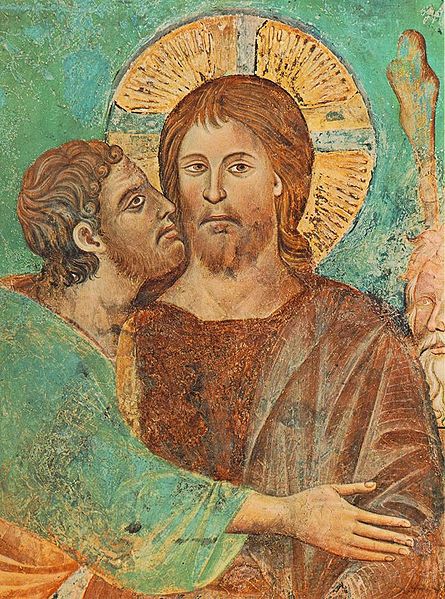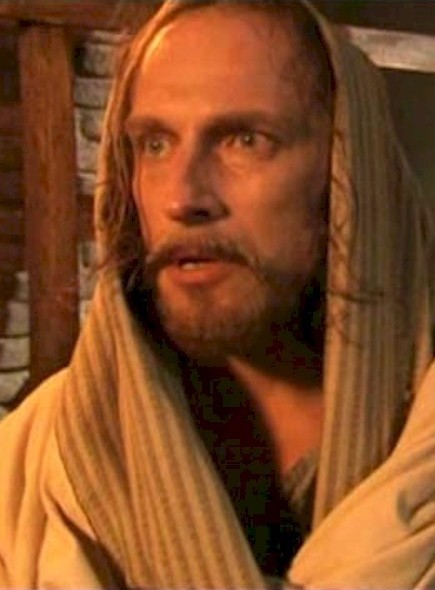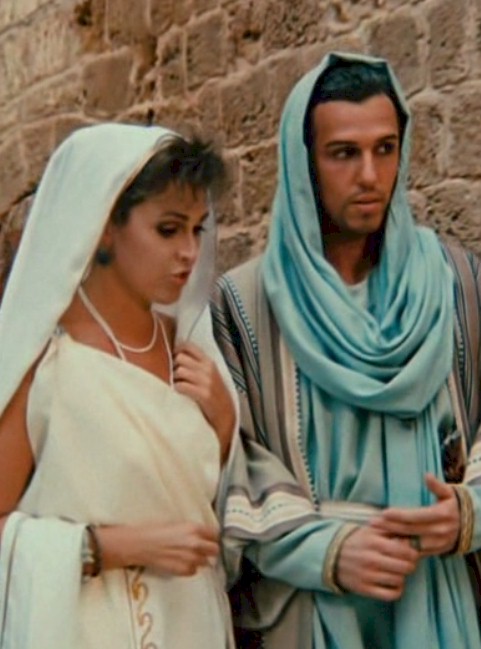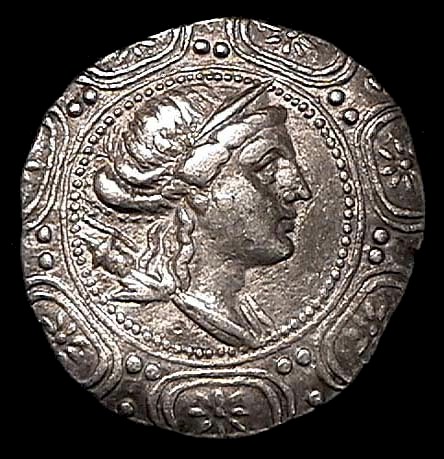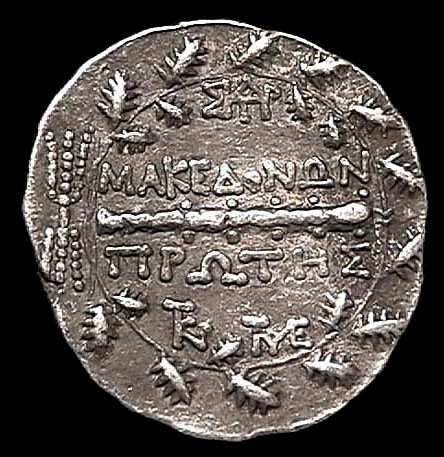Judas from Kiriath
English > Characters > Biblical characters > Judas from Kiriath
Context
In chapter 2 of The Master and Margarita, when Yeshua is taken before Pilate for the first time, he asks him if he knows a certain Judas from Kiriath. And yes, the evening before last, HaNozri made the acquaintance of this young man, who had invited him to his place in the Lower City. «A good man, a very good man and an inquisitive one», he says about him. Judas showed the greatest interest in Yeshua's thoughts and received him very cordially. «And he lits the lamps...» Pilate says. Yeshua is slightly surprised that the procurator was so well informed. «Yes», he says, «and he asked me to give my view of state authority. He was extremely interested in this question.» And when Yeshua had explained his opinion, men ran in, bound him, and took him away to prison.
Judas only returns in chapter 25, when the procurator is talking about him with Aphranius. It seems to be a very handsome young man who would have received thirty tetradrachmas for his betrayal, and he would work in the money-changing shop of one of his relatives. Pilate entrusts Aphranius just received information that Judas is going to be killed that night.
A little later, Judas is walking in the Lower City. He is clearly all dressed up for the great feast. He enters the palace of the high priest Kaifa to leave it a bit later. Then he meets Niza, which excited him so much that his heart started leaping like a bird under a black cloth. She lures him to the olive estate but he will suffer for that. He's robbed of his tetradrachmas and stabbed down. The whole garden of Gethsemane was just then «pealing with the song of nightingales».
Prototype
The name Иуда [Yuda], used by Bulgakov, is the Russian transliteration of the Aramaic יהודה [Yehudah]. Aramaic was the lingua franca in the Middle East at the beginning of our era, and therefore Bulgakov chose to use many of the names in the biblical story of The Master and Margarita in Aramaic. Jerusalem thus became Yershalaim, Jesus became Yeshua, Judas became Yehuda, etc. Unfortunately, not all translators took over or did it only partially, so that in some translations the Aramaic, Latin, Greek and Hebrew names are used interchangeably.
The canonical gospels are using the name Judas, which is the Greek version of Yehuda. The name Iscariot, used in the gospels, means «from the place Kiriath». So far, everything is identical here
For the rest, however, the Yehuda or Judas of Kiriath in Mikhail Bulgakov's work shows quite some differences compared to the Judas Iscariot from the canonical gospels.
In the canonical gospels, Judas Iscariot is one of the twelve apostles. Their names are mentioned in Matthew 10: 2, Mark 3:16 and Luke 6:13, and each of them only mentions Judas as the last in the series, each with the addition «who betrayed Him later». Judas Iscariot therefore knows Jesus for more than two days before his interrogation by Pilate. The apostles, according to the canonical gospels, accompanied Jesus of Nazareth for some three years.
Bulgakov has made Yehuda a spy, driven by money and also by his love for Niza. Niza knew Aphranius, the head of the secret service of Pontius Pilate, and presumably deceived Yehuda with the intention of extraditing him. According to the gospels, however, Judas Iscariot must have been among the intimates of Jesus of Nazareth, because John 12:6 says that he was in charge of the moneybag, although it was added that he stole from it.
With his quote on «liiting the lamps», Pilate wanted to sore Yeshua since he apparently did not understand that Yehuda gave the signal to the men who were waiting outside to arrest him. In the gospels, however, Judas comes to Jesus in the garden of Gethsemane at the Mount of Olives, accompanied by a large crowd, armed with swords and sticks, to betray him with a kiss. According to the Acts of the Apostles 1:12, the Ascension of Jesus would later take place at exactly this place.
And we stay in the same garden of Gethsemane, because that's where Bulgakov situates the murder of Yehuda. However, Judas has not been murdered in the gospels. He committed suicide, «seized with remorse». But only Matthew 27:1-10 mentions this fact, without telling where it happened.
The gospel of Judas
There is also a Gospel of Judas. The early church father Irenaeus of Lyon (140-202) referred to it in his work Against Heresies. It is assumed that the original Greek text of the Gospel of Judas has disappeared for good, but a manuscript with a Coptic translation of it was discovered in 1978 at a supposedly illegal excavation near the city of Minya in Egypt.
The Gospel of Judas shows a very different, more relaxed Jesus than the canonical gospels. He laughs very often, and sometimes even scoffs at the ever-uncomprehending apostles. The content of the dialogues is as simple as explosive material for the church heritage. «You will surpass them all,» Jesus says to Judas, «for you will sacrifice the man who dresses me». So this text implies that Judas, with his betrayal, followed only the commands of his master so that Jesus, after the crucifixion, might arise. His sacrifice is therefore the greatest, not only because without his betrayal there would not have been any resurrection and thus no forgiveness of sins, but also because Judas' name would forever go into history smeared with sins.
Thirty tetradrachmas
In the gospel of Matthew, Judas receives thirty pieces of silver for his betrayal, and he threw his blood money in the temple afterwards. In Matthew 27:3, we can read: «Then Judas, which had betrayed him, when he saw that he was condemned, repented himself, and brought again the thirty pieces of silver to the chief priests and elders».
Thirty pieces of silver was a rather small amount of money. Incidentally, this idea did not come from Matthew himself. Both the amount as the gesture to refund the money come from the Book Zacharius of the Old Testament, which was already written in 520 BC. Zacharias 11:12 - «And I said to them: If it be good in your eyes, bring hither my wages: and if not, be quiet. And they weighed for my wages thirty pieces of silver. And the Lord said to me: Cast it to the statuary, a handsome price, that I was prized at by them. And I took the thirty pieces of silver, and I cast them into the house of the Lord to the statuary».
In Bulgakov's novel Judas gets paid much more. He's talking about thirty tetradrachmas. The tetradrachma was the currency in the city state of Athens, it was a silver coin worth four drachmas. Because of its stability the tetradrachma is often called the dollar of ancient times. The tetradrachma was not suitable as an instrument of payment for daily purchases. Those were paid with oboloi. One tetradrachma was worth 24 obeloi.
In The Master and Margarita Judas does not return the money to the high priest himself. His murderers do it, but the blood on the bag is the blood of Judas of Kiriath.
Share this page |
Biblical characters
Illustrations
Your guide through the novel

In this section are explained, per chapter, all typical notions, names of people and places, quotations and expressions from the novel with a description of the political, social, economical and cultural context.
